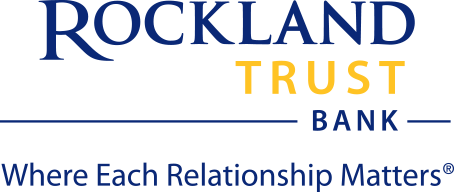Written by Steve Andrews

Tapering Employment Growth
US job growth remains healthy, but it is slowing down. The August employment report showed that job growth was up 2.0% from year ago levels. That compares with 4.2% year-over-year growth in August 2022. Despite the slower job growth, 2023 job gains remain above the 199,000 monthly average in the five years before the pandemic. Slowing job growth and job openings will slow wage gains in the quarters ahead which could reduce the need for more rate hikes.
Speaking of which, average hourly earnings are up 4.3% over the past 12 months, while US job openings (from the JOLTS report) fell from 9.2 million in June to 8.8 million in July. Openings had been straddling the 10 million mark for over 2 years but July’s reading was the lowest since March 2021. In addition, the “quits” rate also fell in July to 3.5 million.
At the late August global economic summit in Jackson Hole, WY, Fed Chair Jerome Powell stressed the importance of these two variables (JOLT & quits) in setting monetary policy and both are heading in the right direction. Despite the slowdown in job growth, Americans aren’t yet stampeding to the unemployment office. New weekly claims for unemployment benefits fell to 216,000 in the most recent week – the lowest level in six months.
The U.S. Consumer
The employment picture has supported consumer spending which has done all the heavy lifting in keeping the economy afloat since it comprises over 70% of GDP growth. Personal Spending rose 0.8% in July, with all major categories showing gains. For all the talk about how all the “COVID Cash” is nearly spent, and consumers will have less savings from which to draw, the latest data from the US Treasury shows that Americans (not China) are the largest investors in US Treasuries, holding about 37% of the approximately $32 trillion in US debt from 3-month T-Bills all the way out to 30-year Bonds. While the bulk of consumer spending of late has come from income (wages, etc.), consumers still have significant other resources to draw from.
Among those are record net worth. The Fed just announced that, after taking a hit earlier this year, US Household Net Worth (HNW) rebounded to a new record in Q2, led by rising stock values and real estate holdings. HNW rose 3.7% last quarter ($5.5 trillion) to $154.3 trillion. The value of household equity holdings rose $2.6 trillion as the S&P 500 enjoyed its best quarter since the end of 2021, while the value of real estate rose $2.5 billion as demand underpinned home prices in the face of low inventory and rising mortgage rates.
Variance by Sector
The year-long slowdown for the US manufacturing sector may be over, but it’s not growing just yet. The ISM Manufacturing Index edged up to 47.6 in August from 46.4 in July and 46.0 in June. The index remains below the “50” level which delineates between contraction and growth, and just five of the 18 industries surveyed reported growth last month. Meanwhile, growth in the US services sector, which makes up 80% of our economy, remains robust. The ISM Non-Manufacturing Index rose to 54.5 last month – the highest level in six months - from 52.7. When these indices approach the “55” level, it signifies very strong growth, and the two most forward-looking subsets, New Orders and Business Activity, remain red-hot, rising to 57.5 and 57.3, respectively.
Mortgage rates, while back to levels seen during the housing boom of the early 2000’s, are quite high when compared with the 10-year Treasury. For the better part of the past 30 years, the 30-year mortgage rate averaged about 150 basis points (1.50%) above the 10-year Treasury yield. Over the past 18 months, that gap has widened to over 300 basis points. The reason is that 30-year mortgages are “living” longer than they did a few years ago. When rates fall, the 30-year mortgage “lives” for about 5 years on average as homeowners constantly refinance to lower rates. Today, with rates rising, refinancings have all but disappeared as few homeowners want to give up a 3.00% mortgage right now, so 30-year mortgages are living longer – pushing the average life to well over 10-years, so they get priced like a longer bond instead of a shorter one, making the gap over the 10-year Treasury much wider than what we’ve been used to, and that gap may be with us for a while.
One more tailwind for disinflation came from the recent revision to Q2 US productivity, which showed that productivity rose 3.5% (year-over-year) last quarter – the best showing in over three years - while hourly compensation rose by 5.7%. This meant that unit labor costs rose just 2.2% from Q2 2022. Unit labor costs correlate closely with consumer price (CPI) inflation and adds fuel to the argument that inflationary pressures are easing.
In Conclusion
As it has for the past 18 months, the Fed looms over the markets like a dark shadow, as investors fear higher rates and restrictive monetary policy. It took a year to see the rate of inflation fall by more than half from its peak but getting that last quarter mile from 4% inflation to the Fed’s 2% target may take at least as long. This stickiness or stubbornness will keep the markets on edge through the rest of the year. That said, the road ahead will remain bumpy and both bulls and bears will, no doubt, have more ammunition with which to plead their cases.





